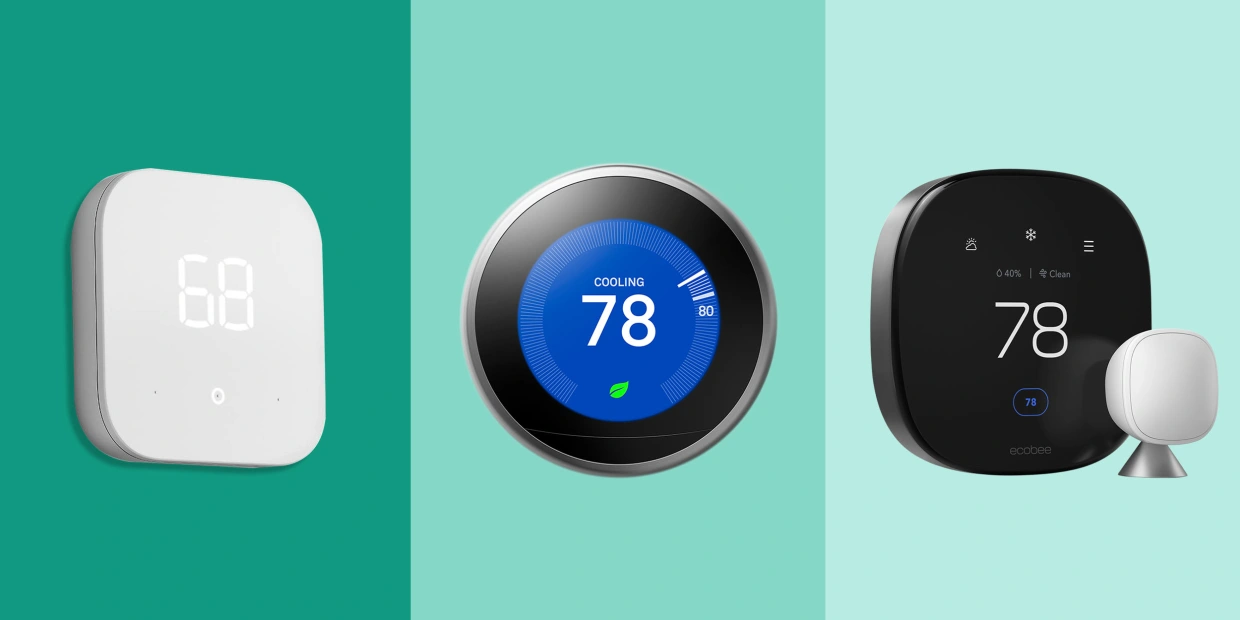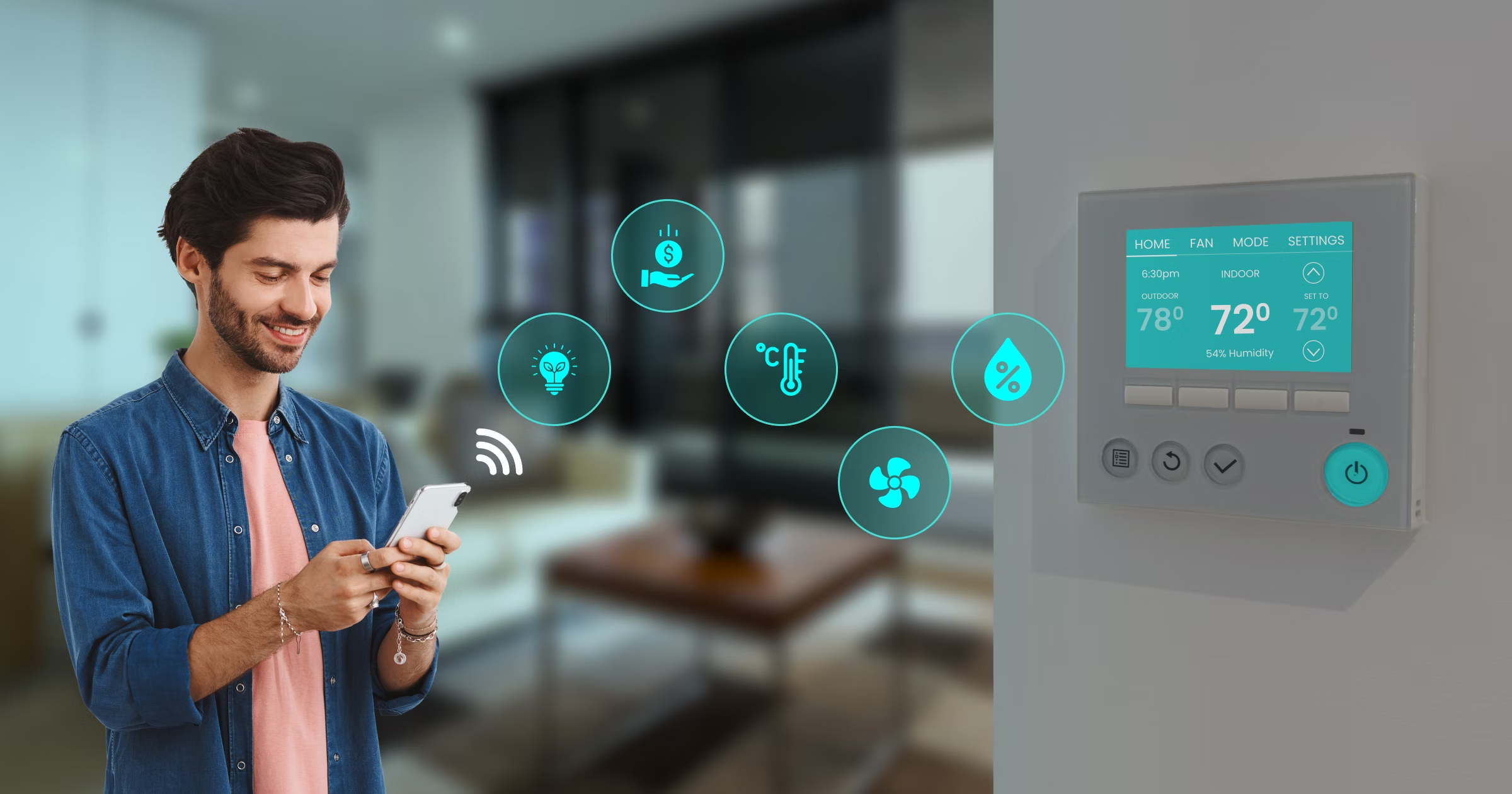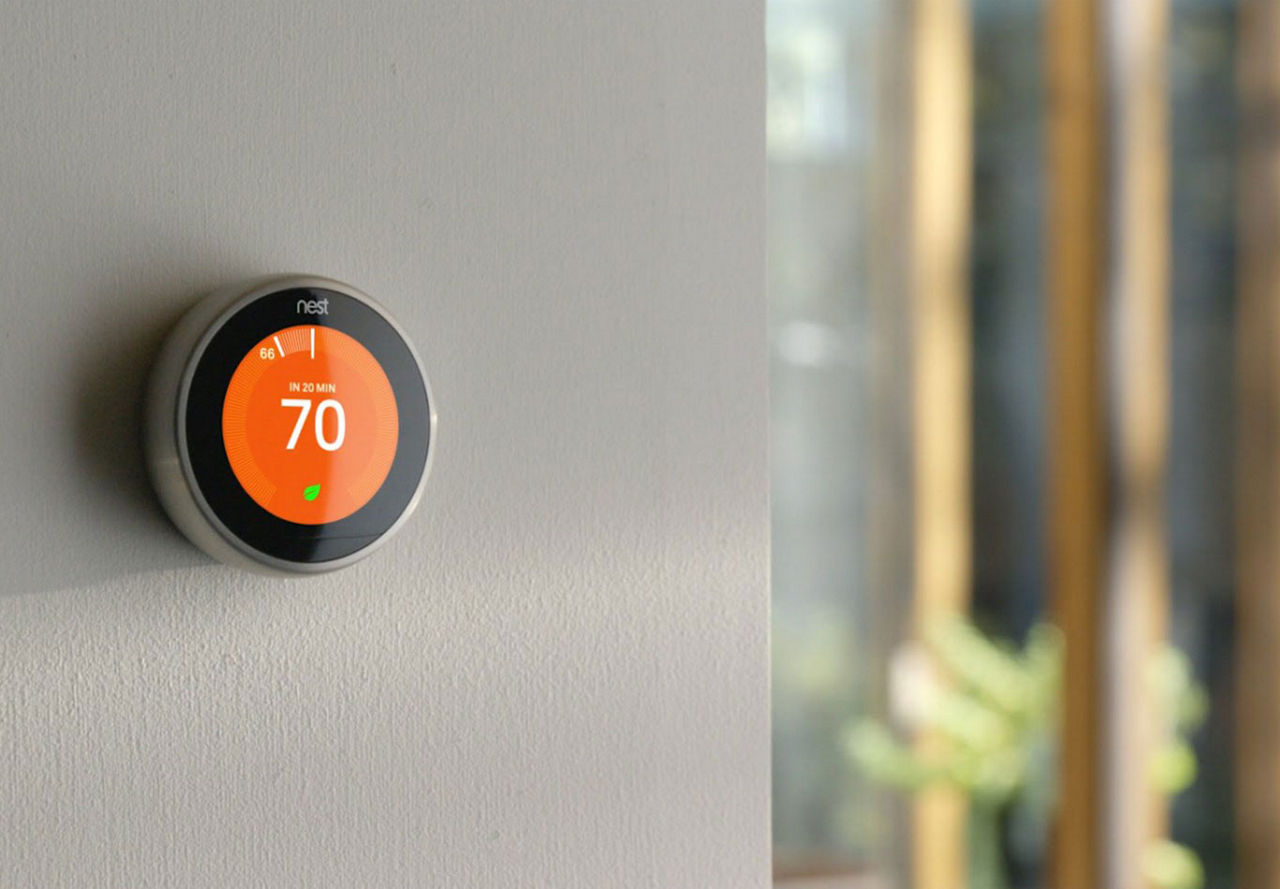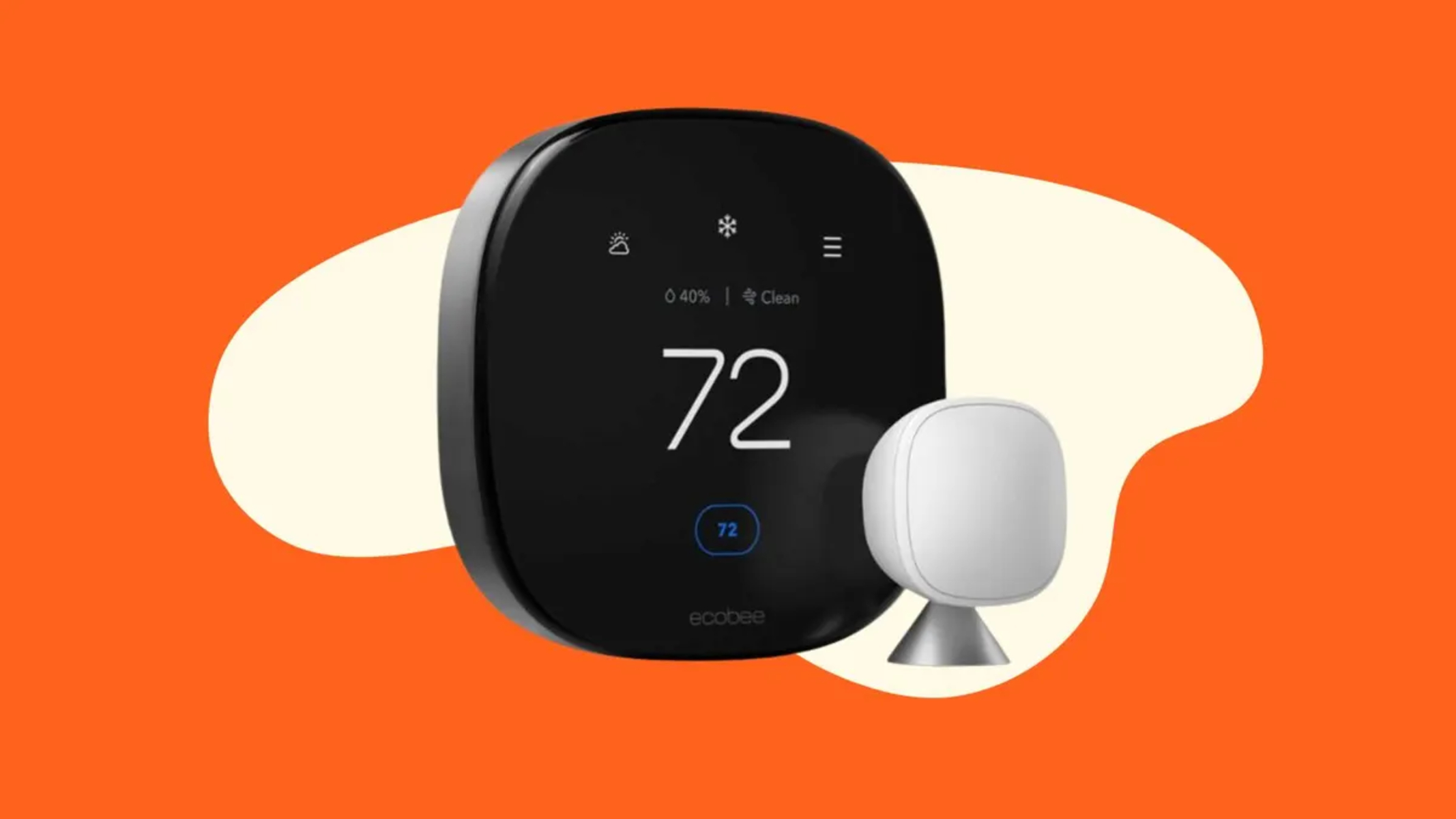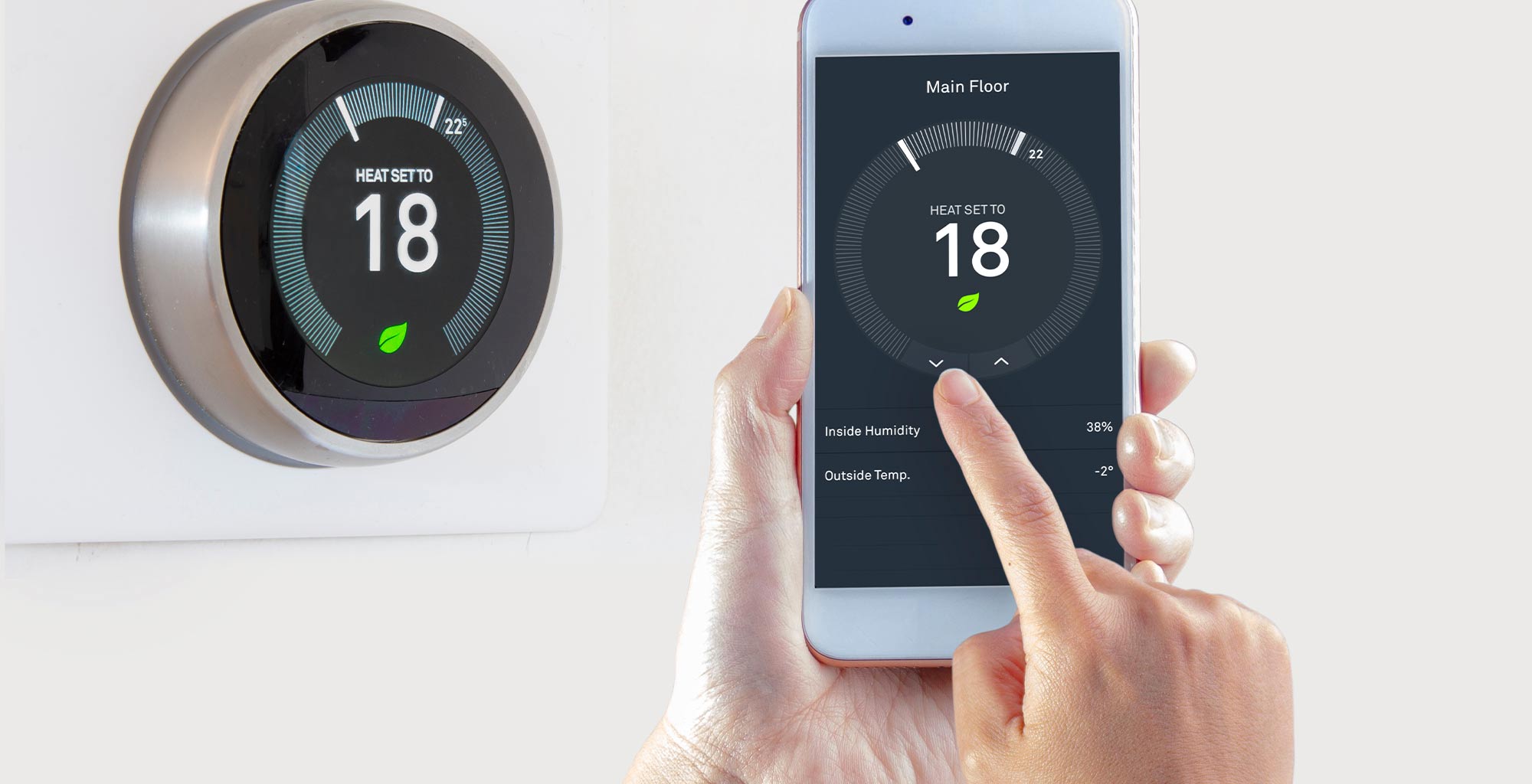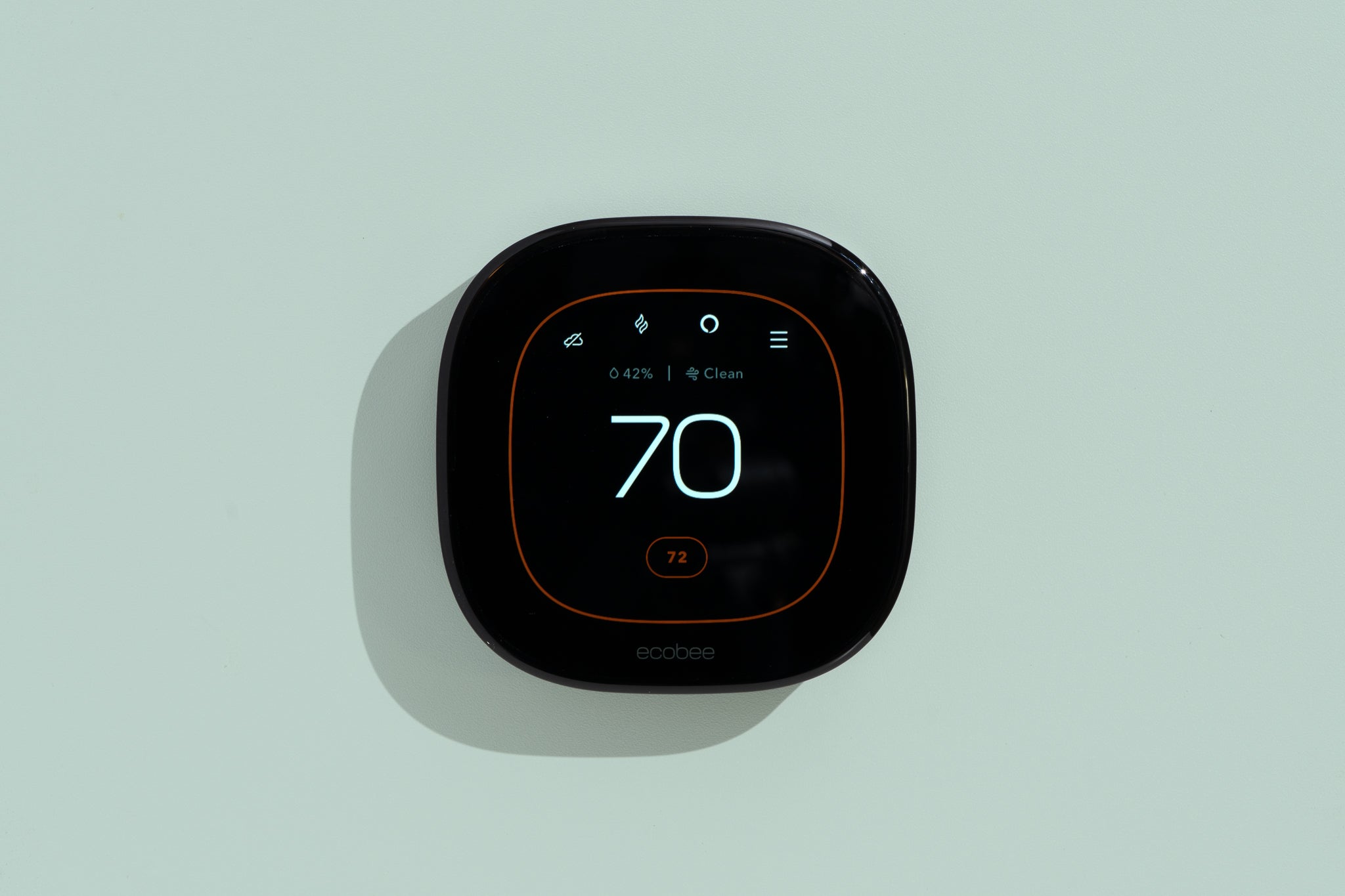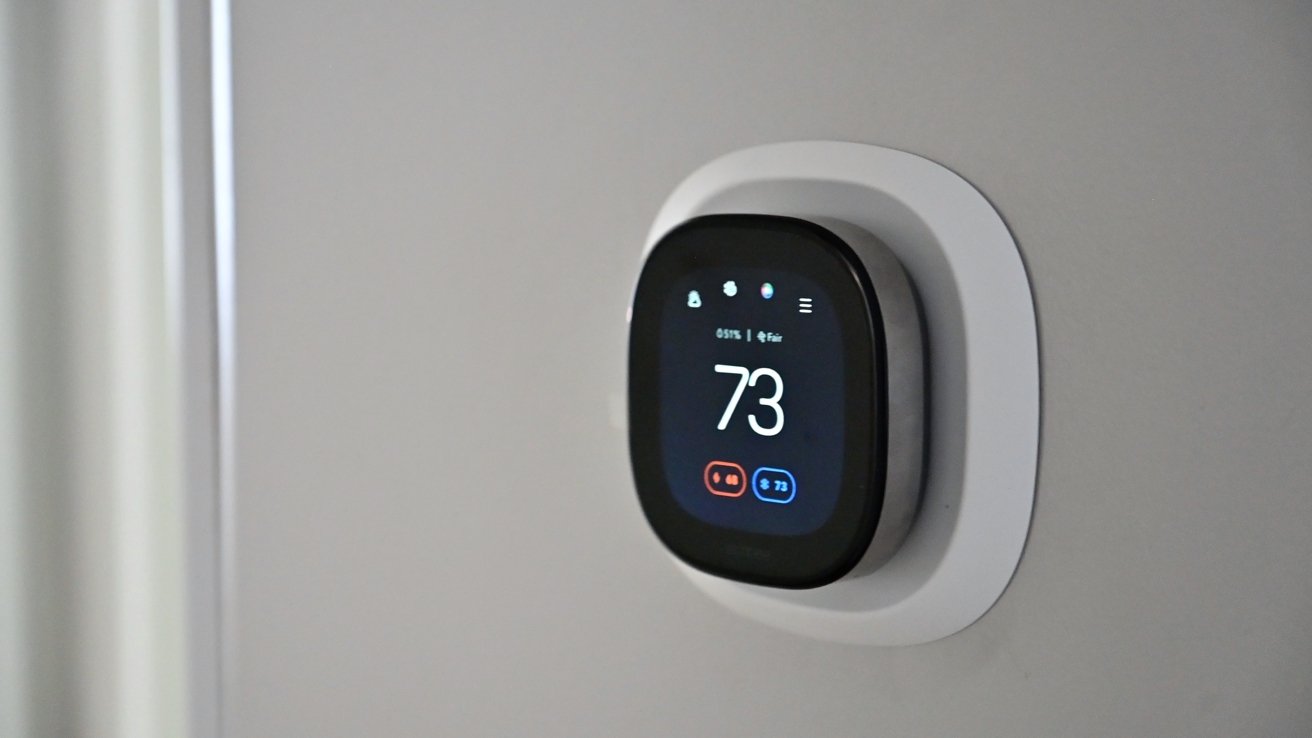Introduction
Welcome to the world of smart thermostats, where comfort and energy efficiency go hand in hand. Much more than a mere temperature control device, a smart thermostat brings convenience, cost savings, and sustainability to your home. Whether you’re seeking to reduce your carbon footprint or trim your monthly heating and cooling expenses, a smart thermostat can help you achieve your goals.
But how exactly does a smart thermostat work, and how much can it really save you? In this article, we’ll delve into the intricacies of these innovative devices and uncover the factors that impact energy savings. We’ll also take a closer look at real-life examples of savings and provide some tips on how to maximize the efficiency of your smart thermostat.
With the advancements in technology, traditional thermostats have become outdated, often resulting in excessive energy usage and unnecessarily high utility bills. Smart thermostats revolutionize home heating and cooling by leveraging the power of automation, artificial intelligence, and connectivity.
Equipped with sensors and Wi-Fi capabilities, smart thermostats gather data on your home’s temperature, occupancy patterns, and even weather forecasts. This data is then analyzed and used to optimize your HVAC system’s operation, ensuring that your home is always at the ideal temperature when occupied and conserving energy when not in use.
Additionally, these intelligent devices can be controlled remotely through smartphone apps or voice assistants, allowing you to adjust the temperature, create schedules, and monitor energy usage from anywhere in the world. This level of control and convenience provides not only comfort but also significant energy savings.
While the primary goal of a smart thermostat is to improve energy efficiency, it also brings a range of additional benefits. For example, some models provide detailed reports on energy consumption, allowing you to track your usage and make more informed decisions on how to reduce your energy footprint. Others offer features such as geofencing, which detects when you leave or arrive home and adjusts the temperature accordingly, ensuring a comfortable living environment without wasting energy.
With all of these advantages, it’s no wonder that smart thermostats are gaining popularity. Whether you’re motivated by environmental concerns or financial savings, investing in a smart thermostat is a smart decision that can enhance your lifestyle and have a positive impact on the planet.
How Does a Smart Thermostat Work?
A smart thermostat is a sophisticated device that uses advanced technology to control and monitor the temperature in your home. Unlike traditional thermostats, which simply allow you to adjust the temperature manually, smart thermostats are equipped with sensors, connectivity, and intelligent algorithms that enable them to optimize your HVAC system’s performance.
At the core of a smart thermostat is the ability to gather data and make informed decisions based on that data. The device typically has sensors to measure the temperature both inside and outside your home, as well as occupancy sensors to detect if anyone is present in the house. Some smart thermostats even incorporate humidity and ambient light sensors to further fine-tune the thermostatic control.
Once the smart thermostat has collected the necessary data, it utilizes machine learning algorithms to analyze patterns and make predictions about your heating and cooling needs. For example, if it detects that you are away from home during certain times of the day, it can automatically adjust the temperature to save energy. Conversely, it can learn your preferred temperature settings when you are typically present and ensure your home is comfortable by the time you arrive.
Connectivity is another key feature of smart thermostats. They are designed to connect to your home’s Wi-Fi network, allowing you to control them remotely through dedicated smartphone apps or even voice assistants like Amazon Alexa or Google Assistant. This means you can adjust the temperature, create customized schedules, and monitor your energy usage from anywhere, providing an unprecedented level of convenience and control.
Furthermore, many smart thermostats integrate with other smart home devices, such as smart lighting systems or smart locks. This enables them to work together in a synchronized manner to optimize energy efficiency and overall comfort. For example, the smart thermostat can communicate with the smart lighting system to automatically dim lights when no one is in the room, further reducing energy consumption.
In addition to their intelligent features, smart thermostats typically come with user-friendly interfaces that make it easy to set up and customize your desired temperature settings. Some models even offer interactive touchscreens or intuitive mobile apps that provide detailed energy usage reports, helping you monitor and track your consumption patterns.
Overall, the combination of sensors, connectivity, machine learning, and usability makes smart thermostats a powerful tool for optimizing energy efficiency in your home. By intelligently managing your heating and cooling system, these devices can save you money on energy bills, reduce your environmental impact, and enhance your overall living experience.
Factors That Impact Energy Savings
While smart thermostats are designed to improve energy efficiency, the extent of the savings you can achieve depends on several key factors. Understanding these factors will help you make the most of your smart thermostat and maximize your energy savings.
1. Climate and Region: The climate in which you live plays a significant role in determining the energy savings you can expect from a smart thermostat. In regions with extreme temperatures, such as hot summers or cold winters, the HVAC system is usually under greater demand, resulting in higher energy consumption. However, a smart thermostat can still optimize the system’s operation and potentially lead to substantial savings.
2. Home Insulation: The insulation of your home is critical in maintaining a comfortable indoor environment and reducing energy loss. A well-insulated home retains warmth during the winter and keeps cool air inside during the summer, reducing the workload on your HVAC system. A smart thermostat can effectively regulate the temperature in a well-insulated home, resulting in significant energy savings.
3. HVAC System Efficiency: The efficiency of your HVAC system plays a vital role in energy savings. A smart thermostat can work in conjunction with a high-efficiency system to ensure optimal performance. On the other hand, an older or less efficient HVAC system may limit the potential energy savings, even with a smart thermostat in place.
4. Occupancy Patterns: The occupancy patterns in your home also impact energy savings. If your home is frequently occupied during the day, a smart thermostat can adjust the temperature according to your schedule, reducing energy consumption while ensuring comfort when needed. Conversely, if your home is often empty, the smart thermostat can lower the temperature or switch to energy-saving mode, resulting in significant energy savings.
5. Personal Preferences: Personal temperature preferences can also affect energy savings. Some individuals may prefer cooler temperatures in the summer or warmer temperatures in the winter, which can impact the overall energy consumption. A smart thermostat allows you to customize temperature settings to suit your preferences while still optimizing energy usage.
6. Usage Patterns: The way you use your HVAC system also influences energy savings. For example, if you frequently adjust the temperature settings or override the smart thermostat’s recommendations, it may hinder its ability to optimize energy usage. Understanding how to effectively use and trust the smart thermostat’s automated features can lead to greater energy savings.
While these factors have an impact on energy savings, it’s important to note that each home is unique, and the actual savings will vary. However, by considering these factors and making small adjustments, you can maximize the energy-saving potential of your smart thermostat and enjoy the benefits of reduced energy bills and increased sustainability.
How Much Can a Smart Thermostat Save on Heating Costs?
The potential savings on heating costs with a smart thermostat can vary depending on several factors, including your climate, heating system, and usage patterns. However, numerous studies have shown that smart thermostats can lead to significant energy savings in the heating season.
According to a study conducted by the U.S. Department of Energy, smart thermostats can save homeowners up to 10% annually on heating costs. This is achieved through a combination of features such as occupancy detection, learning algorithms, and remote control capabilities.
One of the key advantages of a smart thermostat is the ability to tailor heating schedules to your occupancy patterns. By automatically adjusting the temperature based on when you are home and away, a smart thermostat ensures that energy is not wasted heating an empty house. This feature alone can lead to substantial savings, particularly for those with unpredictable or irregular schedules.
Additionally, many smart thermostats have learning capabilities that allow them to understand your heating preferences over time. By analyzing factors such as your manual temperature adjustments, occupancy patterns, and external weather conditions, these devices can optimize the heating system to provide the desired comfort level while minimizing energy consumption.
Remote control functionality is another feature that contributes to energy savings. With a smart thermostat, you can easily adjust the temperature settings from anywhere using your smartphone or other connected devices. If you realize you’ll be coming home later than expected, you can delay heating until you’re closer to your arrival time, reducing energy waste.
In colder climates, where heating demands are high, the savings potential of a smart thermostat becomes even more significant. By effectively managing the heating system and optimizing energy usage, homeowners can realize substantial reductions in their heating bills.
However, it’s important to note that the actual savings will depend on factors such as the efficiency of your heating system, insulation levels in your home, and the extent to which you utilize the smart thermostat’s features. Homes with older or inefficient heating systems may see more limited savings compared to those with newer, high-efficiency systems.
Nevertheless, the consistent message from studies and real-world usage data is clear: a smart thermostat can significantly reduce heating costs and provide a tangible return on investment over time. By optimizing energy usage and allowing for personalized control, these devices empower homeowners to achieve both comfort and energy efficiency in their homes.
How Much Can a Smart Thermostat Save on Cooling Costs?
When it comes to cooling costs, a smart thermostat can offer substantial savings by efficiently managing your air conditioning system. The potential savings may vary depending on factors such as your climate, cooling system, and usage patterns.
According to studies, a smart thermostat can help you save an average of 10% to 15% on your cooling costs. By utilizing features like occupancy sensing, learning algorithms, and remote control capabilities, these devices optimize your cooling system’s performance and reduce energy waste.
One of the primary benefits of a smart thermostat in the cooling season is the ability to adjust the temperature based on occupancy patterns. By automatically raising the temperature when you are away from home or lowering it when you are present, a smart thermostat prevents excessive cooling of unoccupied spaces. This feature alone can lead to significant savings by reducing energy usage during times when cooling is not required.
Another key feature of smart thermostats is their ability to learn your cooling preferences over time. By considering factors such as your temperature adjustments, occupancy patterns, and external weather conditions, these devices can optimize the cooling system to provide the desired comfort level while minimizing energy consumption.
Remote control functionality is also a valuable aspect of smart thermostats for cooling savings. With a smart thermostat, you can adjust the temperature settings remotely using your smartphone or other connected devices. If you’re away from home but want to arrive in a cool and comfortable space, you can remotely activate the cooling a short while before you return. This way, you can save energy by avoiding unnecessary cooling when the house is unoccupied while still enjoying comfort upon your arrival.
In regions with hot climates and long cooling seasons, the savings potential of a smart thermostat becomes even more significant. By efficiently managing the cooling system and optimizing energy usage, homeowners can see noticeable reductions in their cooling bills.
However, it’s important to acknowledge that the actual savings will depend on various factors, including the efficiency of your cooling system, insulation levels in your home, and the extent to which you utilize the smart thermostat’s features. Homes with older or less efficient cooling systems may not experience as substantial savings compared to those with newer, high-efficiency models.
Nevertheless, studies and real-world data consistently demonstrate that smart thermostats significantly reduce cooling costs while maintaining comfort levels. By intelligently controlling your cooling system, these devices empower homeowners to achieve both energy savings and a pleasant indoor environment.
Case Studies: Real-Life Savings Examples
Real-life examples of energy savings achieved with smart thermostats provide valuable insights into the potential cost reductions and return on investment. Here are a few case studies highlighting the savings homeowners have experienced:
1. Case Study 1: John, a homeowner in a cold climate, installed a smart thermostat in his 2,000 square foot home. Over a year, he saw a 15% reduction in his heating costs. The smart thermostat optimized his heating system’s operation, adjusted temperature settings based on occupancy patterns, and allowed him to control the temperature remotely when he was away. John estimated that the energy savings translated into approximately $200 in annual savings on his heating bills.
2. Case Study 2: Emily and David live in a warmer climate and installed a smart thermostat to manage their cooling costs. With the ability to create customized schedules and remotely adjust the temperature, they saw a 12% reduction in their cooling expenses. The smart thermostat’s occupancy sensing capabilities and integration with their smart lighting system further enhanced their energy savings. They estimated annual savings of around $180 on their cooling bills.
3. Case Study 3: Sarah resides in a region with both hot summers and cold winters. By using a smart thermostat and leveraging its learning algorithms, she achieved a 17% reduction in her overall energy usage, resulting in approximately $250 in savings annually. The smart thermostat adapted to her occupancy patterns, adjusted temperature settings based on external weather conditions, and allowed for personalized control, enabling her to optimize her HVAC system’s efficiency.
4. Case Study 4: Mark and Lisa live in a well-insulated home equipped with a high-efficiency HVAC system. They decided to invest in a smart thermostat to further enhance their energy savings. With the smart thermostat’s learning capabilities and occupancy detection, Mark and Lisa experienced a 20% reduction in their overall heating and cooling costs. This translated to an estimated annual savings of $300. The smart thermostat’s ability to analyze their usage patterns and automatically adjust temperature settings played a significant role in their energy savings.
These case studies demonstrate the range of energy savings that homeowners can achieve with smart thermostats. While the exact savings will vary based on factors like climate, home insulation, and HVAC system efficiency, implementing a smart thermostat has consistently resulted in cost reductions and increased energy efficiency for many households.
It’s important to note that these savings examples are based on individual experiences, and your exact savings will depend on your specific circumstances. Nonetheless, the potential for significant cost savings, coupled with increased comfort and convenience, makes investing in a smart thermostat a worthwhile decision for many homeowners.
Tips for Maximizing Energy Savings with a Smart Thermostat
While smart thermostats are designed to improve energy efficiency, there are several strategies you can employ to maximize your savings and further reduce your home’s energy consumption. Here are some tips for getting the most out of your smart thermostat:
1. Take Advantage of Scheduling: Set up customized schedules based on your occupancy patterns. Program the thermostat to adjust the temperature settings when you are typically away from home or asleep. This will ensure that you are not wasting energy heating or cooling an empty house.
2. Utilize Geofencing: Many smart thermostats offer geofencing capabilities. By using your smartphone’s GPS, geofencing allows the thermostat to detect when you are leaving or approaching home and adjust the temperature accordingly. This feature ensures that you come back to a comfortable environment without wasting energy while you’re away.
3. Leverage Learning Algorithms: Give your smart thermostat time to learn your preferred temperature settings and occupancy patterns. The more data it gathers, the better it becomes at optimizing your HVAC system’s performance. Trust the device and avoid unnecessary manual adjustments that may interfere with its learning capabilities.
4. Use Remote Control: Take advantage of the remote control functionality of your smart thermostat. If you’re away from home longer than expected, use your smartphone app to raise or lower the temperature before your return. This way, you can ensure comfort upon arrival without wasting energy by cooling or heating an empty house.
5. Manage Temperature Ranges: Set temperature ranges rather than specific temperatures. This allows the thermostat to adjust within the range based on factors such as occupancy, external weather conditions, and time of day. It provides flexibility while still optimizing energy usage.
6. Integrate with Other Smart Home Devices: If you have other smart home devices like smart lighting or smart blinds, integrate them with your smart thermostat. This enables synchronization between devices, allowing for enhanced energy savings. For example, the smart thermostat can communicate with the smart lighting system to adjust lights based on occupancy, reducing unnecessary energy usage.
7. Regularly Maintain Your HVAC System: A properly maintained HVAC system operates more efficiently, allowing your smart thermostat to optimize energy savings. Schedule regular maintenance checks, clean or replace air filters as needed, and keep the system in good working order.
8. Monitor and Analyze Energy Usage: Most smart thermostats provide energy usage reports or insights. Take advantage of this information to understand your consumption patterns, identify areas for improvement, and make necessary adjustments to optimize energy efficiency. This knowledge will help you make more informed decisions and further reduce energy waste.
By implementing these tips, you can maximize the energy savings potential of your smart thermostat. Remember that every home is unique, so it may take some experimentation to find the settings and strategies that work best for your household. However, with a proactive approach and utilization of the smart features, you can achieve significant cost savings while maintaining a comfortable living environment.
Conclusion
Smart thermostats have revolutionized the way we control and manage our home heating and cooling systems. These intelligent devices offer not just convenience and comfort, but also the potential for significant energy savings. By leveraging advanced technology, learning algorithms, and connectivity, smart thermostats optimize our HVAC systems’ performance and reduce energy waste.
Throughout this article, we explored how smart thermostats work, the factors that impact energy savings, and real-life examples of the cost reductions homeowners have achieved. We also provided valuable tips for maximizing energy savings with your smart thermostat.
From occupancy sensing and learning algorithms to remote control functionality and scheduling features, smart thermostats empower homeowners to achieve both comfort and energy efficiency. By customizing temperature settings, utilizing geofencing capabilities, and integrating with other smart home devices, you can further optimize your energy usage and reduce environmental impact.
It’s important to remember that the actual energy savings with a smart thermostat will depend on factors such as climate, home insulation, HVAC system efficiency, and individual usage patterns. However, numerous studies and real-life examples have consistently shown that homeowners can expect savings of approximately 10% to 15% on their heating and cooling costs with a smart thermostat.
Beyond the financial benefits, investing in a smart thermostat contributes to environmental sustainability. By reducing energy consumption, we can collectively mitigate our carbon footprint and contribute to a greener future.
In conclusion, a smart thermostat is a valuable addition to any home. It not only provides convenience, comfort, and control but can also lead to significant energy savings. With the right settings, regular maintenance, and a proactive approach to energy management, you can optimize the performance of your HVAC system, reduce your utility bills, and make a positive impact on the planet.







